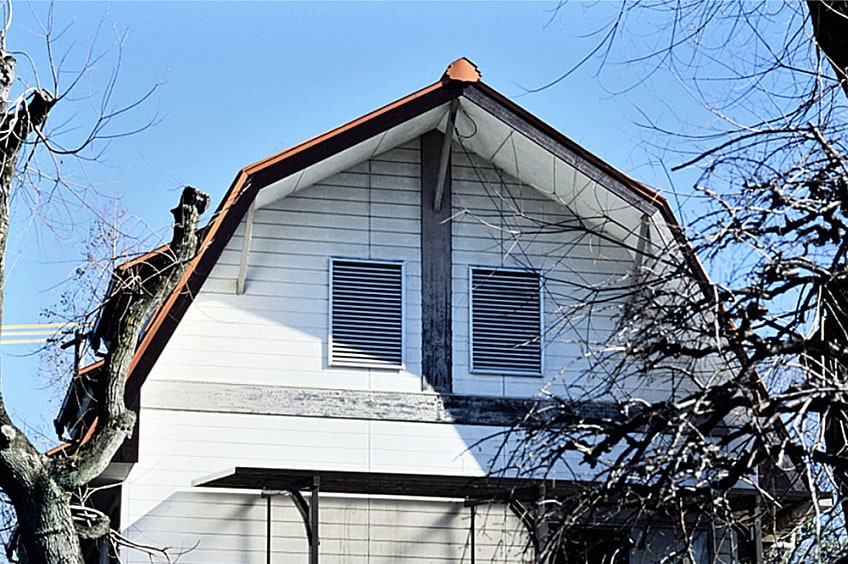Gambrel roofs, also commonly called barn roofs, are common across America. Brought over by the Dutch, some of the earliest gambrel roofs in America were found in buildings from the 16th century. Today, they fit in perfectly with the resurgence of the farmhouse style.
These roofs are a versatile and cost-effective roof style that adds storage space to your home.
What Are Gambrel Roofs?
A Gambrel roof is a two-sided roof with two slopes on each side, where the lower slope is steeper than the upper slope. It is most often seen in 18th-century North American Dutch colonial homes. Its unique design provides the benefits of a sloped roof without compromising space inside.
History of the Gambrel Roof
Although its exact origins in America are unknown, it is believed that the Dutch brought the design over with them. It was originally called a "Dutch roof" in America. The style was particularly popular from the 16th to 18th century, and was used on both commercial and residential buildings. The oldest known of this roof type is found on the second Harvard Hall at Harvard University, built in 1677.
This roof style is currently seeing a resurgence with the popularity of the farmhouse building style. This style emphasizes rustic, country looks for building interiors. It is cozy and comfortable, but with a modern flair. Today's farmhouse design includes all the modern conveniences with a rustic or historical look.
What Are the Benefits of a Gambrel Roof?
Storage Space
This roof type provides extra storage space in the attic. The steep slopes maximize headroom to create a larger attic.
Historical Look
These roofs have a classic, historical aesthetic, as they were often seen in North American buildings constructed in the 18th century.
Flexibility
Adding windows and dormers to the side of the roof is typically fairly easy, making it possible to capture additional daylight and promote ventilation.
Drainage
The steep sides allow rain to flow off easily, which helps reduce the risk of water damage.
Cost-Effectiveness
With fewer beams and columns, these roofs require less material, which keeps costs down. It is also fairly simple to install, which may help reduce labor costs.
5 Types of Gambrel Roofs
There are several variations on the traditional Dutch colonial gambrel roof.
1. Classic
As its name implies, the classic style has two sides with two slopes on each side. The lower slope is steeper than the upper one.
2. Valley
Valley gambrel roofs are seen on square-shaped houses. Each side of the roof has two front-facing slopes in addition to the gambrel slopes.
3. Mansard
A mansard roof has four sloped sides instead of two. It is similar to a hip roof, which is sloped on all four sides.
4. Dormer
A dormer gambrel roof has windows that protrude from each side of the roof. A dormer protects each window from harsh weather.
5. Wall-Supported
A wall-supported gambrel roof doesn't increase the storage space in the attic. The bottom end of each pitch dangles over the edge of the house, reducing the additional space available.
How Are They Installed?
Roofing professionals build these roofs by installing identical trusses across the roof. The number of trusses needed depends on the size of the roof. Trusses are usually spaced out every 16 inches from the center.
Once the trusses have been installed, plywood or OSB—an engineered wood panel—sheathing is placed on the outer face of the trusses. The roof system is installed on top of the sheeting, including an ice and water shield, underlayment, and shingles.
The roof style offers a historical look and is a key choice in the farmhouse architectural design. If you're looking to install this type of roof, contact a GAF certified contractor*.
*Contractors enrolled in GAF certification programs are not employees or agents of GAF, and GAF does not control or otherwise supervise these independent businesses. Contractors may receive benefits, such as loyalty rewards points and discounts on marketing tools from GAF for participating in the program and offering GAF enhanced warranties, which require the use of a minimum amount of GAF products. Your dealings with a Contractor, and any services they provide to you, are subject to the Contractor Terms of Use.

